A Beginners Guide toSUCCULENT GARDENINGA Step-by-Step Guide to Growing Beautiful & Long-Lasting Succulents Taku Furuya

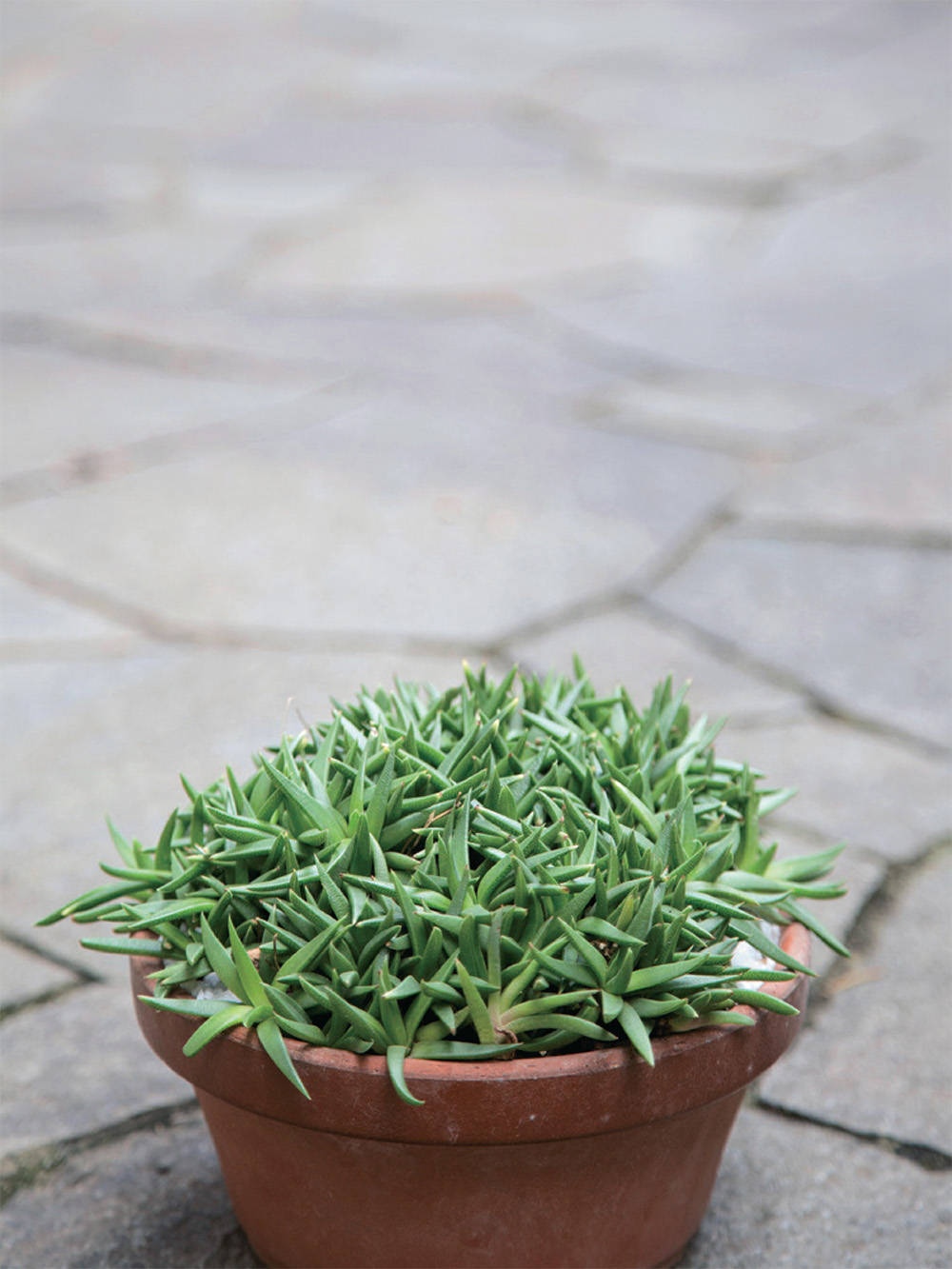
Preface Succulents have grown in popularity year by year, and thats not surprising. Theyre easy to care for, tenacious and interesting to look at. Full of wonders unlike any other plant, succulents can really pique our curiosity. Succulents evolved in dry regions with little rainfall, branching off into many diverse varieties. Their harsh native environments forced them to store water inside themselves. You might say that their charming, plump leaves, stems, and roots are the product of their accumulated survival skills.
Because they seem so adaptable and self-sufficient, some people tend to think that succulents dont need water or attention. But easy as they are to grow and care for, theyre still living organisms, with needs that must be met in order for these captivating plants to thrive. This book was written for novices who want to try growing a succulent or two. Ive selected 21 popular varieties, and have explained the basics of caring for them in a way thats easy to understand, with plenty of illustrations and photos to help guide you. How should I water my plants? What kind of soil should I choose? Where should I keep my plants? Even these most basic of questions will be explained as thoroughly as possible. With this book, youll have the fundamentals you need for growing beautiful, healthy succulents.
And if, because of this book, youll be growing and enjoying succulents for years to come, there will be no greater joy for me as an author. Taku Furuya  How to Use this BookExplaining Succulent Cultivation from the Most Basic of Level This book is an introductory guide for those who want to start growing succulent plants. The information on how to grow and maintain these plants is compiled in a 4-page spread for each type of succulent included in this book. I have structured the book so the information on these spreads is complete, and you will have all the knowledge you need to grow any and all of the included varieties. The information on potting soil composition, the points to remember when buying, and the annual calendar that come with each variety make this book a useful tool as early as the shopping stage. I have divided the succulent varieties into three types based on their growing periods: Spring/Fall TypesGrow the most during spring and fall.
How to Use this BookExplaining Succulent Cultivation from the Most Basic of Level This book is an introductory guide for those who want to start growing succulent plants. The information on how to grow and maintain these plants is compiled in a 4-page spread for each type of succulent included in this book. I have structured the book so the information on these spreads is complete, and you will have all the knowledge you need to grow any and all of the included varieties. The information on potting soil composition, the points to remember when buying, and the annual calendar that come with each variety make this book a useful tool as early as the shopping stage. I have divided the succulent varieties into three types based on their growing periods: Spring/Fall TypesGrow the most during spring and fall.
Growth slows during summer. Spring/Summer/Fall TypesGrow throughout spring, summer, and fall. Growth slows during winter. Fall/Winter/Spring Types Grow throughout fall, winter, and spring, but is weak to ice forming at freezing temperatures. Dormant during summer. The Fundamentals for Growing Succulents section at the end of the book covers the most basic information that is shared by all varieties, and it also acts to supplement the pages for each variety.
If you scan this section first, youll have a good preliminary base for starting your adventure with succulents. How to Read the Symbols in this BookLevel of Difficulty Flowering
Flowering Native Region
Native Region Information about points to check when buying, potting soil composition, transplanting, and propagating are shown with illustrations.
Information about points to check when buying, potting soil composition, transplanting, and propagating are shown with illustrations. The cultivation calendar shows the watering, placement and sunlight, and actions required for every season.
The cultivation calendar shows the watering, placement and sunlight, and actions required for every season. For each variety, I will introduce other plants of the same genus. Challenge yourself to cultivate more difficult varieties as well.[Example] Members of the Echeveria genus
For each variety, I will introduce other plants of the same genus. Challenge yourself to cultivate more difficult varieties as well.[Example] Members of the Echeveria genus
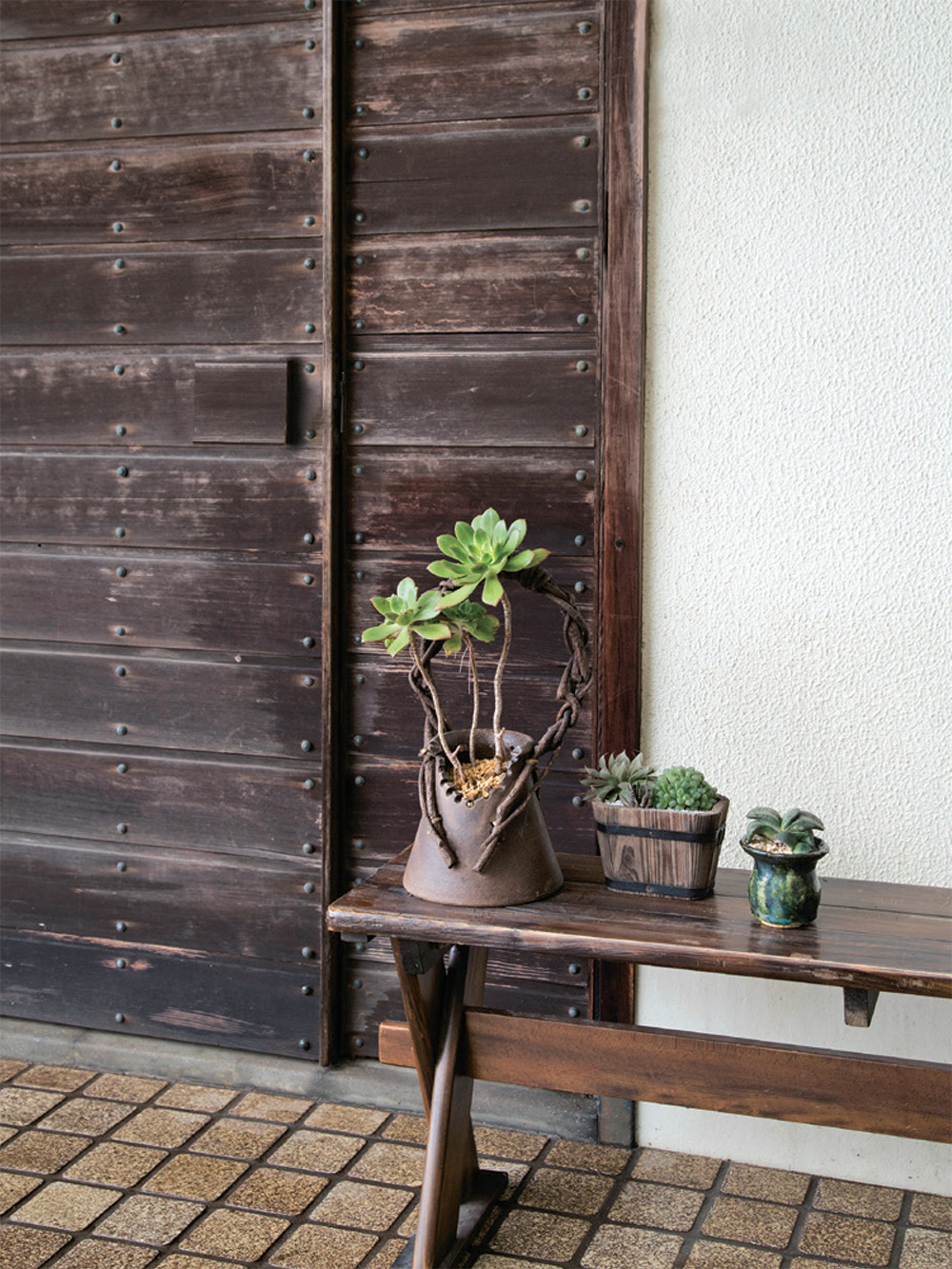 Deciding how to decorate with succulents is part of the fun of growing them! Try setting or hanging succulents in your own homemade containers. Even with smaller plants, this is a great way to add personality to your living space.
Deciding how to decorate with succulents is part of the fun of growing them! Try setting or hanging succulents in your own homemade containers. Even with smaller plants, this is a great way to add personality to your living space.  Add succulents to small, empty places to create a stylish space.
Add succulents to small, empty places to create a stylish space. 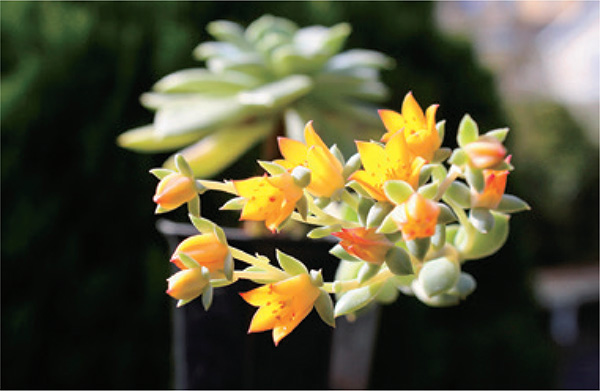 Everyday pleasure in a succulent plant lies in its leaves, but of course were especially happy when the flowers bloom.
Everyday pleasure in a succulent plant lies in its leaves, but of course were especially happy when the flowers bloom.  Everyday pleasure in a succulent plant lies in its leaves, but of course were especially happy when the flowers bloom.
Everyday pleasure in a succulent plant lies in its leaves, but of course were especially happy when the flowers bloom.
The flowers that bloom only once a year are a vibrant and beautiful surprise.
Spring/Fall Types
Echeveria rosularis / E. elegans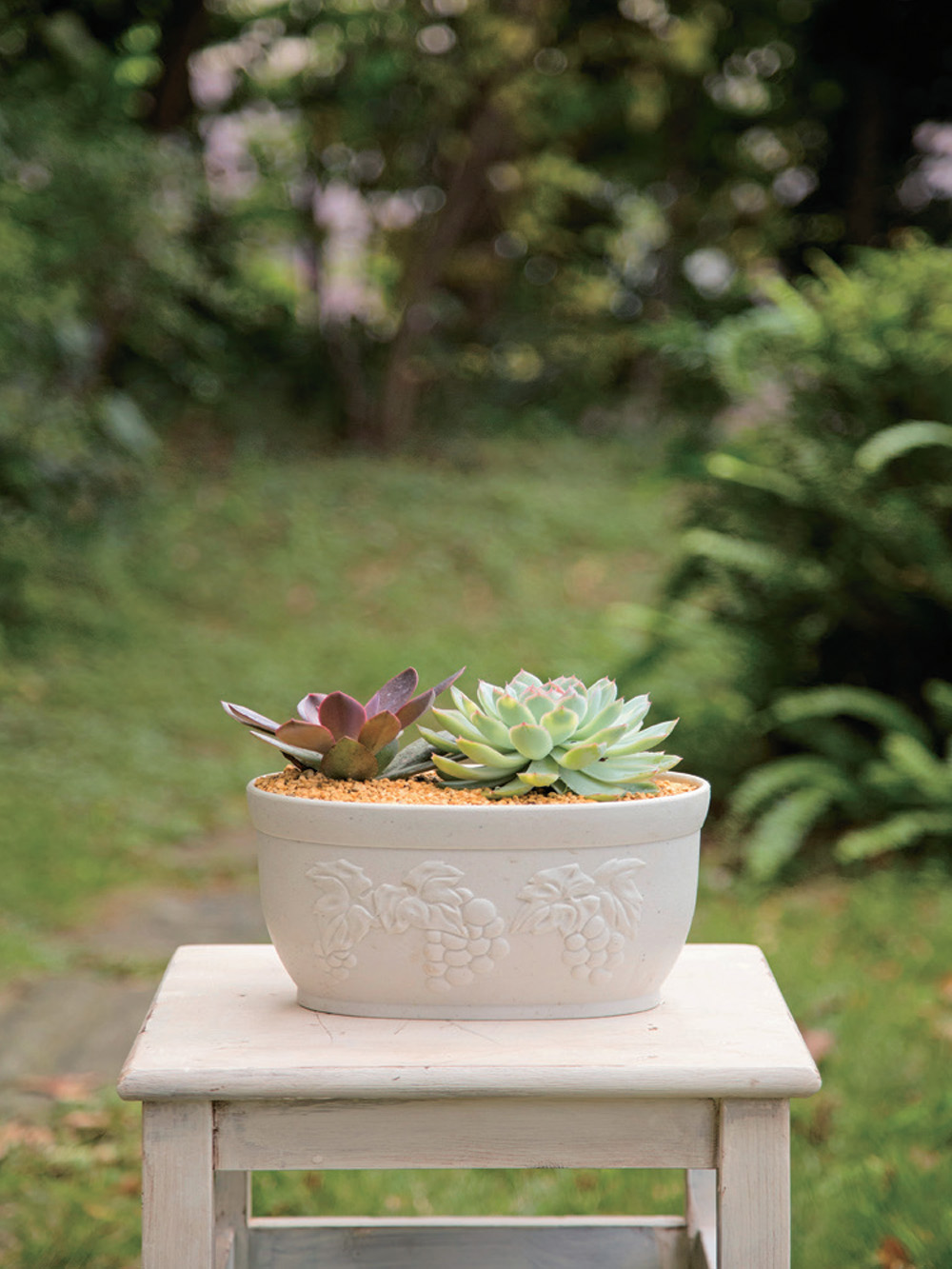 Characteristics of E. rosularis and E. elegans
Characteristics of E. rosularis and E. elegans Plants of the
Echeveria genus are popular among succulents for their abundance of varieties and colors and for the rosette shape formed by their leaves. rosularis and
E. elegans are exposed to plenty of sunlight during fall and winter, the pigment in the leaves becomes more concentrated with the arrival of cold temperatures, and the plant becomes vividly beautiful.
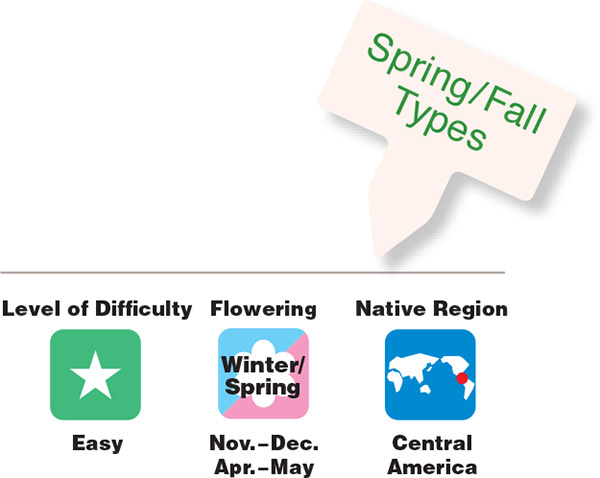 Points to Check when Buying
Points to Check when Buying The plant should form a compact rosette shape with a low height and little space between the leaves.
 Points to Check when Buying
Points to Check when Buying The plant should form a compact rosette shape with a low height and little space between the leaves.
The leaves should be full and plump. 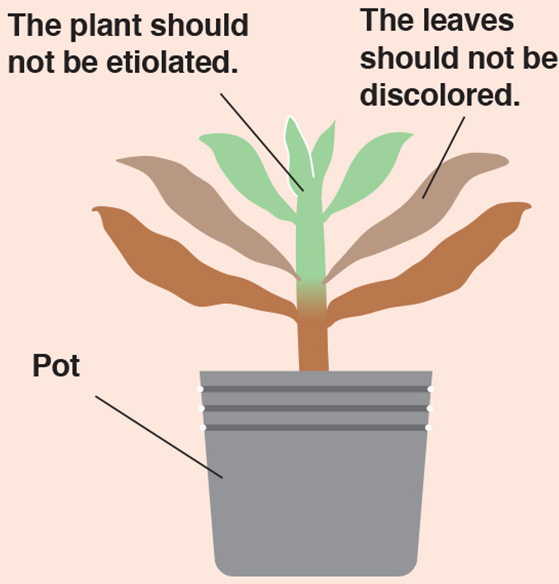

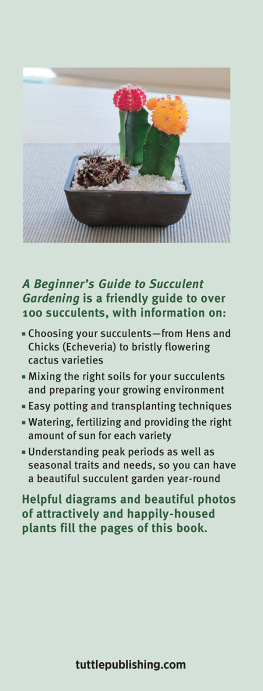



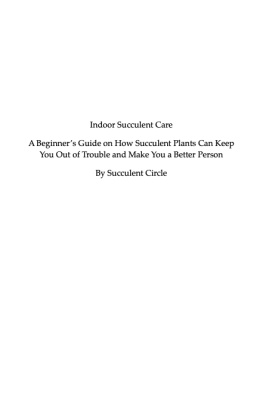
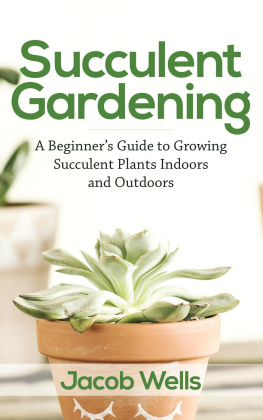


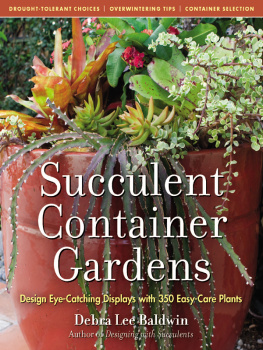


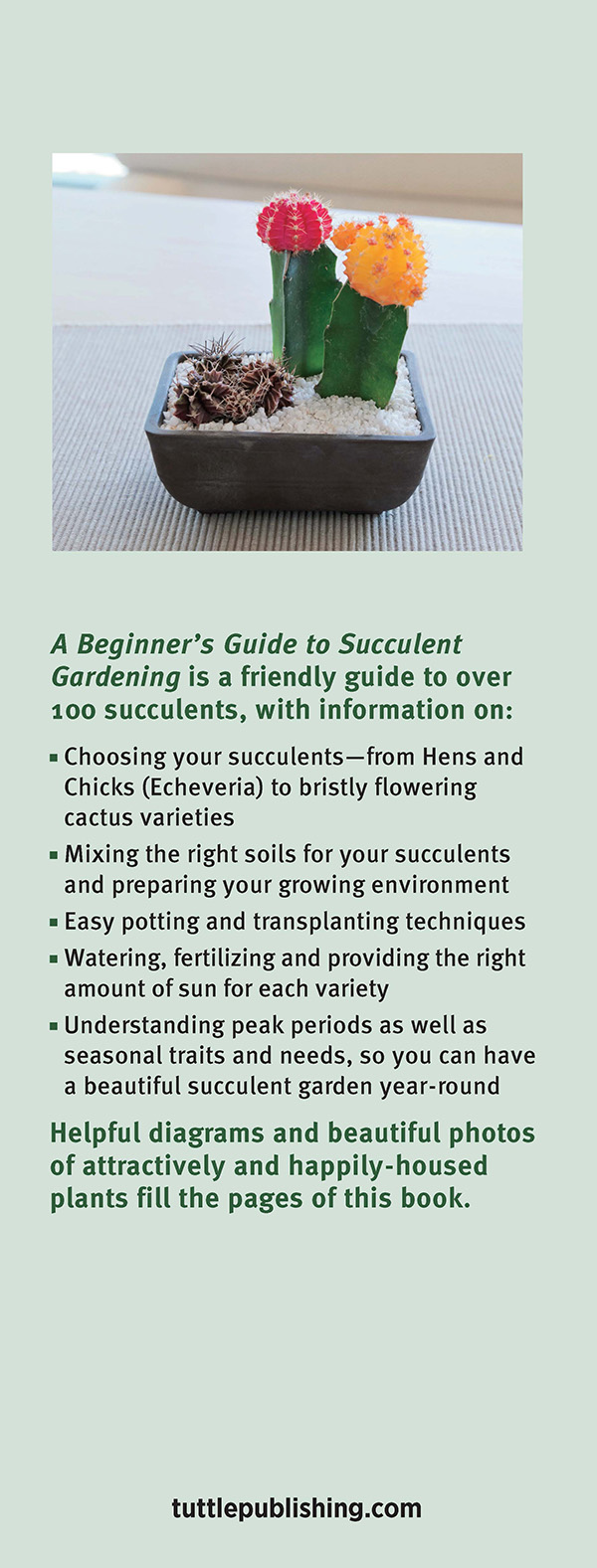

 Preface Succulents have grown in popularity year by year, and thats not surprising. Theyre easy to care for, tenacious and interesting to look at. Full of wonders unlike any other plant, succulents can really pique our curiosity. Succulents evolved in dry regions with little rainfall, branching off into many diverse varieties. Their harsh native environments forced them to store water inside themselves. You might say that their charming, plump leaves, stems, and roots are the product of their accumulated survival skills.
Preface Succulents have grown in popularity year by year, and thats not surprising. Theyre easy to care for, tenacious and interesting to look at. Full of wonders unlike any other plant, succulents can really pique our curiosity. Succulents evolved in dry regions with little rainfall, branching off into many diverse varieties. Their harsh native environments forced them to store water inside themselves. You might say that their charming, plump leaves, stems, and roots are the product of their accumulated survival skills.  How to Use this BookExplaining Succulent Cultivation from the Most Basic of Level This book is an introductory guide for those who want to start growing succulent plants. The information on how to grow and maintain these plants is compiled in a 4-page spread for each type of succulent included in this book. I have structured the book so the information on these spreads is complete, and you will have all the knowledge you need to grow any and all of the included varieties. The information on potting soil composition, the points to remember when buying, and the annual calendar that come with each variety make this book a useful tool as early as the shopping stage. I have divided the succulent varieties into three types based on their growing periods: Spring/Fall TypesGrow the most during spring and fall.
How to Use this BookExplaining Succulent Cultivation from the Most Basic of Level This book is an introductory guide for those who want to start growing succulent plants. The information on how to grow and maintain these plants is compiled in a 4-page spread for each type of succulent included in this book. I have structured the book so the information on these spreads is complete, and you will have all the knowledge you need to grow any and all of the included varieties. The information on potting soil composition, the points to remember when buying, and the annual calendar that come with each variety make this book a useful tool as early as the shopping stage. I have divided the succulent varieties into three types based on their growing periods: Spring/Fall TypesGrow the most during spring and fall. Flowering
Flowering Native Region
Native Region Information about points to check when buying, potting soil composition, transplanting, and propagating are shown with illustrations.
Information about points to check when buying, potting soil composition, transplanting, and propagating are shown with illustrations. The cultivation calendar shows the watering, placement and sunlight, and actions required for every season.
The cultivation calendar shows the watering, placement and sunlight, and actions required for every season. For each variety, I will introduce other plants of the same genus. Challenge yourself to cultivate more difficult varieties as well.[Example] Members of the Echeveria genus
For each variety, I will introduce other plants of the same genus. Challenge yourself to cultivate more difficult varieties as well.[Example] Members of the Echeveria genus
 Deciding how to decorate with succulents is part of the fun of growing them! Try setting or hanging succulents in your own homemade containers. Even with smaller plants, this is a great way to add personality to your living space.
Deciding how to decorate with succulents is part of the fun of growing them! Try setting or hanging succulents in your own homemade containers. Even with smaller plants, this is a great way to add personality to your living space.  Add succulents to small, empty places to create a stylish space.
Add succulents to small, empty places to create a stylish space.  Everyday pleasure in a succulent plant lies in its leaves, but of course were especially happy when the flowers bloom.
Everyday pleasure in a succulent plant lies in its leaves, but of course were especially happy when the flowers bloom.  Characteristics of E. rosularis and E. elegans Plants of the Echeveria genus are popular among succulents for their abundance of varieties and colors and for the rosette shape formed by their leaves. rosularis and E. elegans are exposed to plenty of sunlight during fall and winter, the pigment in the leaves becomes more concentrated with the arrival of cold temperatures, and the plant becomes vividly beautiful.
Characteristics of E. rosularis and E. elegans Plants of the Echeveria genus are popular among succulents for their abundance of varieties and colors and for the rosette shape formed by their leaves. rosularis and E. elegans are exposed to plenty of sunlight during fall and winter, the pigment in the leaves becomes more concentrated with the arrival of cold temperatures, and the plant becomes vividly beautiful.  Points to Check when Buying The plant should form a compact rosette shape with a low height and little space between the leaves.
Points to Check when Buying The plant should form a compact rosette shape with a low height and little space between the leaves. 